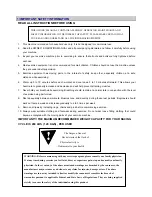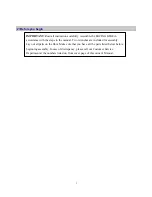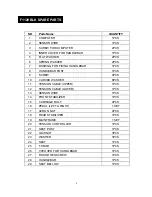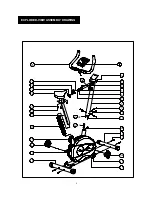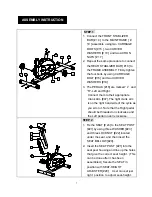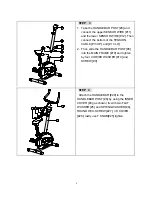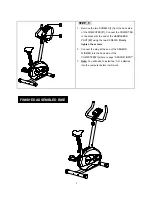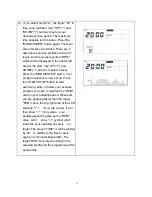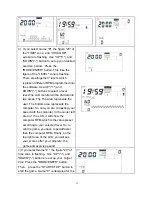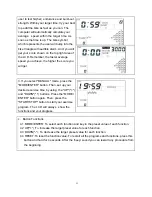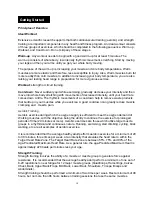
14
Principles of Exercise
Ideal Workout
Extensive scientific research supports that both cardiovascular training (aerobic) and strength
training are important components in any health and fitness program. An ideal workout consists
of three groups of exercises, which should be completed in the following sequence: Warm-up,
Workout, and Cool-Down. Do not skip any of these stages.
Warm-up
: Any workout needs to begin with a good warm-up for at least 5 minutes. The
warm-up consists of whole body, low intensity rhythmic movement, stretching. Start by moving
your legs and then your arms until you get your whole body moving.
The purpose of the warm-up is increasing your muscle and core body temperatures. Warm
muscles are more elastic and therefore, less susceptible to injury. Also, Warm muscles burn fat
more readily than cold muscles. In addition to increasing your body temperature, you are also
raising your resting heart range in preparation for more vigorous exercise.
Workout
: strength or circuit training.
Cool-down
: Never suddenly quit while exercising, gradually decrease your intensity and then
move into whole body stretching with movements of decreased intensity, until your heart rate
comes down a little. The rhythmic movements of a cool-down help to remove waste products
that build up in your muscles while you exercise. A good cool-down can greatly reduce muscle
cramping and muscle pain.
Aerobic Training
Aerobic exercise during which the oxygen supply is sufficient to meet the oxygen demand of
Working muscles, with the objective being the ability to continue the exercise for prolonged
periods of time (20 minutes or more). Aerobic exercises are those which utilize large muscle
groups in a rhythmical and continuous nature. Running, swimming, stair climbing, cycling, brisk
walking, etc. are all examples of aerobic exercise.
It is recommended that the average healthy adult perform aerobic exercise for a minimum of 20
to 30 minutes, three times per week, at an intensity that elevates the heart rate to within the
Target Heart Rate Zone. The Target Heart Rate Zone is between 55%, 75% and 90% of the
Age-Predicated Maximum Heart Rate. As a general rule, the age-Predicted Maximum Heart is
approximately 220 beats per minutes less your age.
Strength Training
Strength training involves the ability of a muscle or muscle group to generate force against
resistance. It is recommended that the average healthy adult perform a minimum of one set of
8-20 repetitions to near fatigue for 12 major muscle groups (Quadriceps, Hamstrings, Calves,
Chest, Back, Upper Back/Traps, Mid Back, Lower Back, Shoulders, Triceps, Biceps and
Abdominals).
Strength training should be performed a minimum of two times per week. Rest a minimum of 48
hours, but no more than 96 hours between training sessions that use the same muscles.
Getting Started


